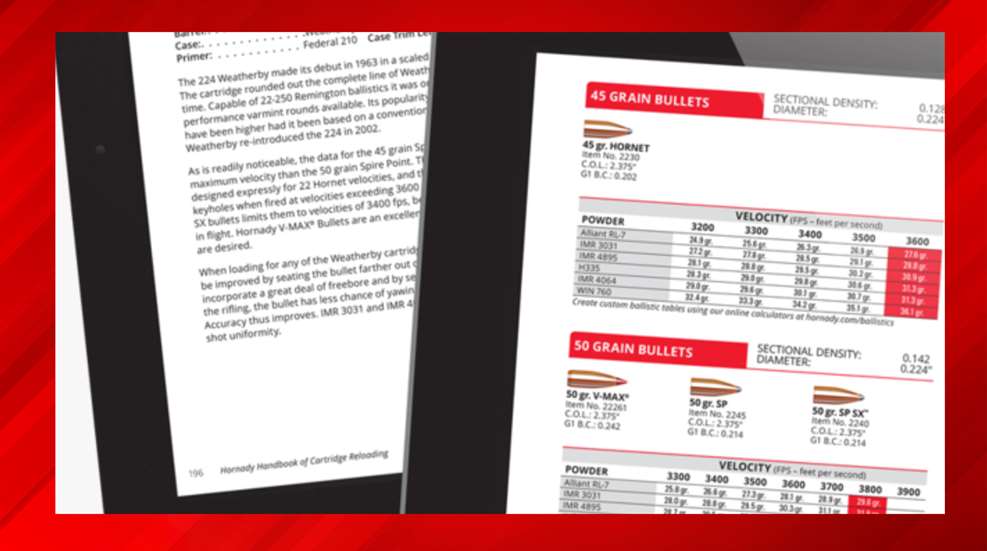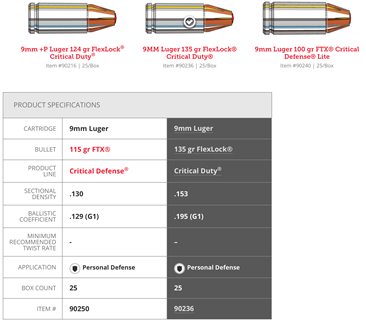Understanding Sectional Density (SD)
Tags: NRA Women, Range, Ammunition
More than just a math equation, SD is important in the applications of self-defense and hunting.
by HEIDI LYN RAO posted on March 3, 2023
NEWS, TERMINOLOGY, HUNTING, GEAR, FIREARMS
Support NRA Women DONATE

Understanding Sectional Density (SD) – NRA Women.com
Sectional Density (SD) is a term that is becoming part of everyday gun talk. Sectional Density (SD) has been an important factor in caliber selection for more than 82 years. SD was often referred to as “knock down power” or “stopping power.” It was a common belief that “heavy and slow” was better than “light and fast” in stopping a threat. The comparison was hitting someone with a brick versus a cinder block. The downside was that heavy and slow had significantly more recoil than light and fast. Nowadays, this concept has shifted to light, fast, capacity and less recoil.
Sectional Density (SD) is the bullet weight in pounds divided by the square of its diameter in inches. It can also be calculated by bullet weight in grains divided by 7000 X bullet diameter squared. In other words, Sectional Density (SD) is how heavy and long the projectile or bullet is regardless of the shape, as opposed to Ballistic Coefficient (BC), which is determined by shape. All projectiles of the same caliber and weight will have the same Sectional Density (SD).
SD is important in the applications of self-defense and hunting. In the self-defense world, to stop the threat, you need to penetrate vital organs. The way you do this is having a projectile or bullet that has deep penetration. Today, the 9mm is the king of self-defense calibers. In the past the .45 wore the crown. The 9mm, 115-gr. cartridge has a SD of .130, and the .45, 230-gr. cartridge has a SD of .162.
In 1940, at the start of World War II, the United States performed a series of experiments known as the Thompson-LaGarde tests to determine the best pistol rounds for defense. The tests included the 7.65X21 Parabellum (.30 Luger), 9X19 Parabellum (9mm), .38 Long Colt, .38 ACP, .45 Colt (ACP), .476 Eley, and .455 Webley. It was determined that the .45-cal. cartridge was the best cartridge for “stopping power” in dealing with an aggressor. The results noted the “Sectional” area or SD was one of the determining factors.

SD is also important in hunting applications. A high SD is essential for hunting dangerous game with thick tough hides so you get the penetration you need to quickly stop an animal that could easily turn the tables on the hunter. For smaller or thin-skinned animals, a projectile or bullet with a lessor SD might be sufficient.
You should always match your ammunition to the game you are hunting. Many popular calibers come in different bullet weights so the hunter can select the best SD for terminal performance. As a rule, you would want a higher Sectional Density (SD) for the larger game you are pursuing. Using the example above, a Hornady 150-gr. Superformance .30-06 Sprg. cartridge has a Sectional Density or SD of .226 and a Hornady 50-gr. Superformance .223 Remington cartridge has a Sectional Density or SD of .142. To look at it practically, if you are varmint hunting, the .223 Remington would be a better choice. If you are whitetail deer hunting, the .30-06 Sprg. would be the better option.
The following guidelines should be followed when selecting a cartridge for hunting. A bullet with an SD of .180 or smaller is a good choice for small animals such as varmints and rabbits. A bullet with a SD of .200-.230 is good for medium-size animals such as whitetail deer or mule deer. A bullet with an SD of .278-.280 is good for large animals such as elk and caribou. A bullet with an SD of .300 or larger is best for very large animals with tough hides such as brown bears, buffalo or elephant.
A high Ballistic Coefficient (BC) and a high Sectional Density (SD) is a deadly combination. This means that a projectile is delivered with a lot of energy and a lot of mass. In other words, the bullet has massive stopping or knockdown power. This does not mean you should carry a .45 ACP pistol for self-defense over a 9mm pistol. Just like when hunting, match your self-defense pistol and ammunition to the performance you are looking for.
Today’s 9mm cartridges for self-defense are much more potent and have much better performance than the 9mm cartridges the Axis powers carried in World War II. Additionally, the trend in hunting is shifting to lighter cartridges with less recoil. We have all been overwhelmed with articles praising the attributes of the 6.5 Creedmoor. Always consider a bullet’s terminal performance and at what distances for which they were designed.

Just like there is no one right handgun for self-defense or rifle for all hunting, there is no one right cartridge. For example, for self-defense, you might carry a 9mm pistol with a 115-gr. bullet in the summertime, and a larger grain bullet in the wintertime when an aggressor might be wearing layers of clothing or a heavy jacket. Many ammunition manufacturers offer different weights in self-defense ammunition so the consumer can buy a cartridge that meets their needs. Hornady offers a Critical Defense cartridge with a 135-gr. bullet. This is a +P (higher pressure) cartridge with a Sectional Density (SD) of .153. This cartridge has almost the same SD as the larger .45 ACP cartridge with a bullet weight of 230 grains.
Do your homework and spend time researching for the best cartridge for you. During the COVID pandemic, we had a very limited selection of ammunition to purchase because that is all that was on the shelves. Today, we have a much larger selection of ammunition because shelves are once again restocked. It is now the time to reassess what we carry or hunt with to ensure that rounds that we carry will perform the best for what we need!
